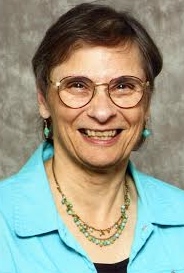By Sue Clemmer Steiner.
From Flowing with the River: Soundings from my Life and Ministry, p. 92-94. Self-published 2013. Reprinted with permission. To order the book, see www.flowingwiththeriver.com.
On sabbatical I found myself snowed in for 24 hours in a motel in Michigan. There Eugene Peterson’s book The Contemplative Pastor hit me with force. We can get sucked into defining our ministry, said Peterson, as “running a church.”[1]
I wondered: is that beginning to happen to me? After all, a couple generations back my maternal grandfather Irvin Derstine “ran a farm” with his brother. My own father and his Clemmer and Moyer kin “ran a feed mill” (although sometimes it seemed to me that the feed mill ran them). So why should I be surprised to find myself slipping into “running a church?” That descriptor fit my administrative bent, my care about both the big picture and the details, my desire for things to “come out right,” and my need to work hard—not to mention my hope of pleasing as many folks as possible.
I recognized with horror how easily I could be lured into the mind trap of “running the church” as a guiding metaphor for my practice of ministry. So I eagerly read Peterson. Pastoral busyness, he suggested, can be diagnosed as “a blasphemous anxiety to do God’s work for him.”[2] “Being busy” assures us and other people that we’re important, for our culture expects successful people to be busy. Furthermore, when we think of our work as “running a church,” we assume the initiative is ours. But the reality is that “God has been working diligently, redemptively, and strategically before I appeared on the scene.”[3]
From Peterson I received the first inkling that my ministry could be guided by questions such as: what has God already been doing here? What traces of God’s grace can I see in this person’s life? What has God set in motion that I can get in on or name or encourage? I wondered: if I were to orient my practice of ministry around such questions, how might that change my priorities? How might it modify my need to be busy?
Through these questions, I first glimpsed the possibility of approaching the ministry of a congregation through the lens of spiritual direction: “What is God up to here? How are we being invited to collaborate with God?” I was excited!
Somewhere in my reading during my sabbatical, I discovered the image of the pastor as a spiritual midwife or birth coach. Maybe, I began to realize, pastors are more like midwives than like doctors. As a child I understood that doctors are supposed to be busy, with a waiting room full of people.
But midwives are quietly on the scene, reading the signs to detect when something good is ready to be born. They coach the process as people and groups labour towards new life in the Spirit. Midwives know when to pause for a cup of tea for the sake of the birth process underway.
I resolved that as I re-entered ministry, I would pay more attention to when it was right to be outwardly busy, and when spiritual leadership actually required me to back off, to watch and wait, to pause for that cup of tea. In other words, sometimes I could stop paddling furiously, watch for the river current to show itself, and let it carry me.


